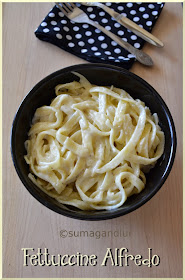
I chose to cook with sabudana this week just because I had around 5 to 6 pounds of sabudana lying in my pantry and as far as I remember I haven't posted a single sabudana recipe so far. Growing up I saw my mother using sabudana / saggubiyyam basically in two recipes - a payasam (that was less preferred over the vermicelli one) and the saggubiyyam vadiyalu or the vadi. Later on came the sabudana dosa, sabudana vada and the khichdi to my life when I had my own home and hearth. For today's post it was decided that I would do a dessert and kheer seemed like an easy way out. I have grown a penchant towards the sago kheer over the years and besides, my son loves it too. However change in plan happened because of Ugadi. I thought of preparing something with sabudana for the neivedyam and this laddu came to the rescue. The laddus were so yum and appealing that even my sweet-phobic husband ate a couple of them without any coaxing from me. They looked so tempting to him that he wanted to taste a bit of it and couldn't stop himself from tasting more. That means a lot coming from a person who wouldn't even glance the sweet dishes.
Ingredients:(Yield 15 - 16 laddus)
1 cup sabudana / sago / tapioca pearls
1 cup powdered sugar (or adjust the quantity)
1/4 tsp cardamom powder
2 tbsp. ghee
1 Tbsp. raisins
1 Tbsp. cashews
Extra ghee / milk to shape the laddus
Method:
* Dry toast sabudana on low flame, continuously stirring until they turn slightly brownish. It would take around 15 - 20 minutes to toast sabudana this way. The hard sabudana would have attained a crunchy texture by the time toasting is done. Transfer the sabudana to a wide plate and let it cool.
* Heat 2 tbsp. ghee in a small pan and add raisins and cashews. Stir and toast them for few seconds until the raisins turn plump and cashews turn golden brown. Turn off the stove and keep the pan aside.
* Grind the toasted sabudana to a fine powder. This step can be done in batches. Grind the mixture and sieve it if it appears coarse. Collect the fine powder and again grind the coarse powder left in the sieve and repeat the process until you are left with finely ground sabudana.
* Combine the ground sabudana, sugar powder, ground cardamom and the toasted cashew-raisin mixture along with the ghee in which they were toasted in a mixing bowl. Add extra melted ghee / milk to the mixture until you are able to hold it together.
* Shape lemon sized balls out of the mixture by rolling between your palms.
* Store them in an airtight container.
Notes:
1. In case, one doesn't prefer to use that much of ghee in the recipe, warm milk can be substituted instead to shape the laddus. 3 to 4 tbsp. milk should suffice to make laddus. Please note to add ghee / milk in small increments instead of dumping it all into the mixture at once. If it becomes too wet, you need extra sabudana powder to fix it and extra sugar to balance the flavor and so add milk/ghee in little quantities, combine the mixture and check whether the laddus can be made or not.
2. If milk is used to make laddus, they would turn harder after a few hours. They just need to be warmed in the microwave for few seconds before consuming them. I used milk to make these laddus and didn't refrigerate them. We ate them in about four days and they stayed fresh for that long.
This goes to Blogging Marathon #50, under the theme of "One ingredient - Three different dishes", Sabudana / Sago / Tapioca pearls being my chosen ingredient. Check out the link to find out what other marathoners are cooking.
Comments














































